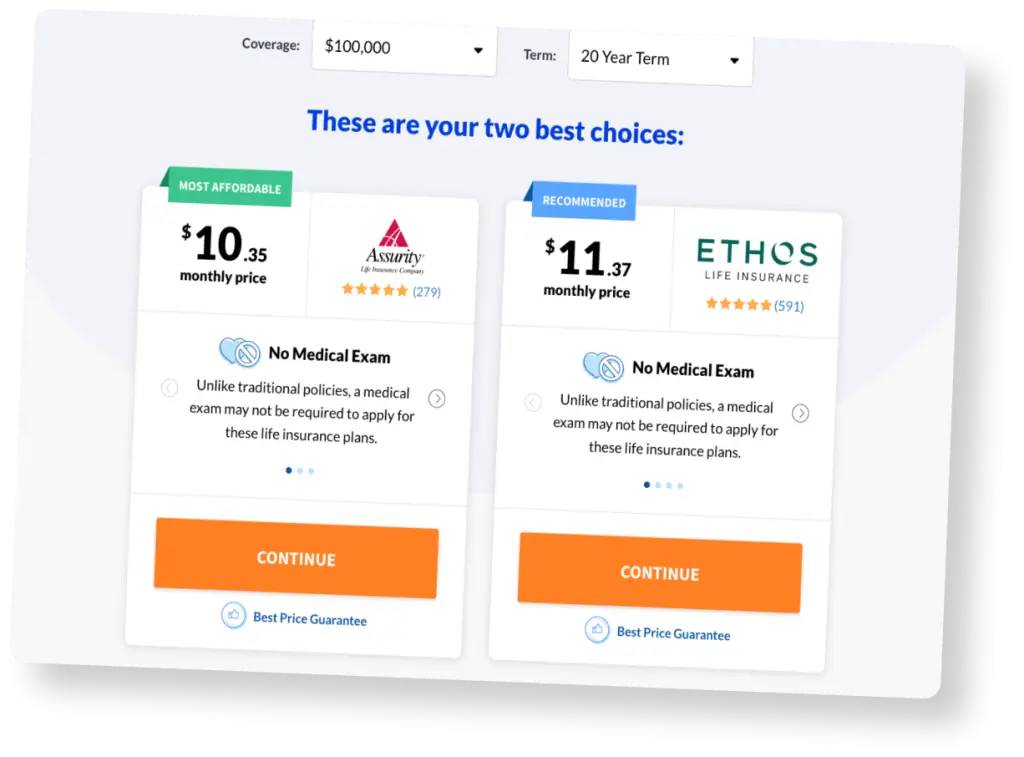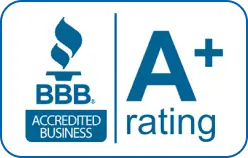Life insurance can serve as a reliable safety net for loved ones. But it also has other uses, such as securing loans. This is where a collateral assignment enters the picture. A collateral assignment involves using the policy’s death benefit as collateral for a loan, ensuring the lender receives payment if the borrower passes away.
Collateral assignments transfer some ownership rights from the policyholder to a creditor. This means the lender gets paid first from the death benefit, up to the loan amount. Any remaining funds go to the policy’s designated beneficiaries. This approach provides a win-win situation: financial security for the lender and peace of mind for the borrower.
Exploring how collateral assignment works is important for anyone considering it. Understanding this concept can help policyholders make informed decisions, especially when it comes to their financial health and their family’s future.
Key Takeaways of How Is a Collateral Assignment Used in a Life Insurance Contract?
- A collateral assignment allows a portion of a life insurance policy’s death benefit to serve as security for a loan, ensuring the lender is repaid if the borrower passes away.
- The policyholder retains ownership of the life insurance policy, while the lender becomes a conditional assignee entitled to loan repayment from the death benefit.
- After the loan is repaid, the remaining death benefit goes to the designated beneficiaries, helping preserve the policy’s original purpose.
- Whole life and universal life policies are more commonly used for collateral assignments due to their cash value, while term life policies offer fewer options.
- Policyholders should consult with financial advisors to fully understand tax implications, repayment terms, and how collateral assignment may affect beneficiaries.
Understanding Life Insurance Contracts
Life insurance contracts are agreements between an individual and an insurance company where the insurer promises to pay a designated beneficiary a sum of money upon the insured’s death. Understanding different policies and types is crucial for making informed decisions.
What Is Life Insurance?
Life insurance is a contract with an insurance company that provides a sum of money to beneficiaries when the insured person dies. This serves as a financial safety net for loved ones, helping cover expenses like debts, funeral costs, and lost income.
Insurance contracts typically include details like the premium amount, death benefit, and the term of coverage. Premiums are paid by the policyholder, either monthly or annually, to maintain the policy’s effectiveness. While most insurance is designed to protect families, some policies can also build cash value over time, offering additional financial benefits.
Life insurance policies are legally binding and require the insurer to fulfill their obligations as outlined in the contract. It is essential for policyholders to clearly understand the terms and choose a policy that supports their financial goals.
Types of Life Insurance Policies
There are various types of life insurance policies, each catering to different needs. A whole life insurance policy offers lifelong coverage and builds cash value over time. This cash value can be borrowed against or withdrawn, providing financial flexibility.
Term life insurance is another common type, providing coverage for a specified period, such as 10, 20, or 30 years. It usually has lower premiums compared to whole life insurance but does not build cash value.
Universal life insurance combines features of both term and whole life policies, allowing flexibility in premium payments and death benefits. Policyholders can adjust their coverage amounts over time to match their financial situations.
Choosing the right policy involves considering factors like financial goals, budget, and the level of coverage needed. Each policy type offers unique benefits and potential drawbacks, so it is important to thoroughly explore options before making a decision.
Basics of Collateral Assignment
Collateral assignment plays a crucial role in life insurance policies, especially when used as security for loans. It allows policyholders to use their insurance policy to secure a loan, providing lenders some assurance.
Defining Collateral Assignment
Collateral assignment is a legal process in which a policyholder assigns the rights of a life insurance policy to a lender or creditor. This means the lender receives the death benefits if the borrower defaults. It’s a conditional assignment, meaning it only affects part of the policy’s benefits.
While the assignee (lender) receives the death benefits needed to cover the outstanding debt, the rest goes to the policy’s beneficiaries. It’s important to understand that the collateral assignment doesn’t alter the ownership of the policy. The policyholder retains ownership and can make changes to it, provided those changes don’t affect the lender’s security interest.
Role of Collateral in Loans
Using collateral, like a life insurance policy, as loan security can make it easier for borrowers to qualify for loans. Lenders see it as a low-risk option because they know they can recover their funds through the policy’s death benefits. This type of assignment supports borrowers who need to provide security but may not have other assets.
In a collateral assignment, the lender’s claim is limited to the outstanding loan balance. Any remaining benefits after the loan is settled go to the beneficiaries. This process ensures that both parties—the lender and the beneficiaries, receive their rightful portions from the policy. For more details on how collateral assignments work, check out Bankrate’s explanation.
Collateral Assignment of Life Insurance
Collateral assignment of life insurance allows a life insurance policy to serve as collateral for a loan. Here, the policyholder assigns part of the policy’s death benefit to a lender to secure a debt.
How It Works
The collateral assignment begins with the policyholder filling out a collateral assignment form. This form outlines the agreement between the policyholder, also known as the assignor, and the lender, or assignee. The document lets the lender access the policy’s benefits to cover the loan amount if the borrower defaults.
Once the assignment is in place, the insurer becomes aware of the arrangement. They are responsible for paying the lender the loan amount directly from the policy’s death benefit in case of the policyholder’s death. The remaining balance, if any, goes to the policy’s beneficiary. The assignment remains until the loan is fully repaid, at which point it expires. It is essential for the policyholder to notify the insurer to update the contract after the debt is cleared.
Key Terms and Stakeholders
Understanding the roles of each party is crucial. The assignee is the lender who receives the collateral benefit. The policyholder, or assignor, is the person who owns the life insurance policy. They are responsible for ensuring the insurer acknowledges the assignment.
The insurer is the company providing the life insurance and must be informed about any assignment. The beneficiary is the person designated to receive any remaining death benefit beyond the loan amount owed. It’s important to use the proper collateral assignment form to make the process official and binding. Each entity must clearly understand its obligations and rights, ensuring the assignment process is smooth and effective.
Financial Considerations
When using life insurance as collateral, it’s essential to think about cash value, death benefits, and how loans are repaid. Understanding these financial elements helps in making informed choices.
Cash Value and Death Benefit
The cash value of a life insurance policy plays a key role. It represents the savings component of the policy. When using a policy for a loan, the cash value can affect how much is available.
The death benefit is the amount paid to beneficiaries when the insured dies. In a collateral assignment, part of this benefit might be used to repay the outstanding loan. The rest goes to the beneficiaries.
When choosing a policy, the cash value and death benefit should align with intended financial goals. It’s important to keep these elements updated to ensure they meet the needs throughout the policyholder’s life.
Loan Repayment and Insurance Proceeds
A policy loan occurs when borrowing against the cash value of a life insurance policy. Repayment terms vary, and policy owners must pay close attention to these terms.
If the insured person passes away with an outstanding loan, the insurance proceeds will first cover the loan balance. The remainder goes to the beneficiaries.
Ensuring that terms for repayment, like the repayment period, are clear is crucial. Policyholders need to be aware of how much will be repaid from the death benefit versus what beneficiaries will receive. Careful management helps avoid unintended financial gaps.
Managing Interest Rates and Risks
Interest rates impact the cost of a policy loan and the growth of cash value. Policies typically have interest rates that affect the overall loan cost.
Managing these rates is vital to minimize expenses. Fixed rates offer predictability, while variable rates might yield lower rates at times but can also rise. Balancing these options can help manage costs over a long period.
Risks include changes in interest rates or unexpected loan repayment issues. Being mindful of these risks ensures the policyholder can handle any potential financial challenges. As always, regular policy reviews and adjustments can help keep everything on track.
The Policyholder’s Perspective
Policyholders can use a collateral assignment of life insurance to secure loans, turning their policy into a powerful financial tool. Understanding the right choices and possible benefits are essential for making informed decisions.
Choosing the Right Policy for Collateral
A policyholder must consider several factors when selecting a life insurance policy for collateral. Whole life policies often offer more cash value than term policies, making them a better choice for collateral assignments. By assessing the policy’s cash value and terms, they can find the right fit for their needs.
Income tax and estate tax implications are important to examine. Using a policy as collateral might trigger tax liabilities, so understanding these is crucial. Evaluating the potential impact with a financial expert can reduce unexpected surprises.
Life Insurance as Investment
Life insurance policies can be seen not only as a safety net but also as investments. A whole life insurance policy can accumulate cash value over time, providing more than just a death benefit. The policyholder can borrow against this cash value, using it effectively as collateral for loans.
This approach allows them access to funds without having to liquidate other investments. Balancing the risk and benefits ensures that the choice supports personal or business goals. It’s a strategic move that transforms a traditional policy into an active investment asset.
Consulting a Financial Advisor
Consulting a financial advisor or life insurance providers, is a wise step for those considering collateral assignments. They can guide the policyholder through the complexities of life insurance and loan agreements. Advisors provide personalized recommendations, taking into account factors like taxable income and estate planning.
The policyholder gains insights into the financial landscape and explores tax advantages or liabilities. This professional guidance ensures that the decision aligns with their long-term goals, minimizing potential risks. By working closely with an advisor, they gain confidence and clarity in their financial planning, enhancing the effectiveness of their collateral strategy.

Frequently Asked Questions about How Is a Collateral Assignment Used in a Life Insurance Contract?
What Does It Mean to Have a Life Insurance Policy As Collateral for a Loan?
When a life insurance policy is used as collateral, it means that the policy’s value is pledged to a lender as security for a loan. If the borrower dies before the loan is repaid, the lender receives the owed amount from the policy’s value.
How Can You Use Term Life Insurance As Security for a Personal Loan?
Term life insurance can be assigned as security by completing a collateral assignment form. This process allows the lender to receive money from the policy if the borrower cannot repay the loan. The agreement specifies that the lender is entitled to the death benefit to cover any outstanding debt.
What Do Lenders Typically Require When You Use Life Insurance As Collateral?
Lenders usually require a completed collateral assignment form, which specifies the lender’s right to the policy benefits. They may also need proof of the policy’s value and up-to-date premium payments. This ensures that the policy will remain active and valid.
Are There Specific Banks Known for Accepting Life Insurance As Collateral?
Although many banks can accept life insurance as collateral, some financial institutions may be more familiar with processing these assignments. It’s important for policyholders to inquire at banks or other lenders about their requirements and policies regarding life insurance collateral assignments.
Conclusion and Summary of How Is a Collateral Assignment Used in a Life Insurance Contract?
Using a life insurance policy as loan collateral can offer a practical way to secure funding, especially for individuals with a low credit score or limited assets. Whether through a home equity loan, unsecured loan, or home equity line, lenders often see the life insurance death benefit as a valuable asset, especially when tied to permanent life insurance policies that carry a cash value. By assigning a policy through a conditional assignment appointing a collateral assignee, borrowers can access financing while still protecting the primary beneficiary’s interest in the full death benefit.
However, not all policies qualify. Some lenders only accept term life insurance, while others prefer the consistency of permanent life insurance. A key factor is the life insurance company’s approval of the life insurance application, which may involve health underwriting, an obstacle for those in poor health. In these cases, existing options like a life insurance loan from an existing life insurance policy may be a better fit.
It’s important to keep up with loan payments, as falling behind or choosing to miss payments could reduce the death benefit payout or, in some cases, cause you to owe income tax on the loan amount. Likewise, borrowers must understand the difference between a conditional assignment and an absolute assignment, especially when the intent is to borrow money temporarily rather than surrender ownership for their entire life.
With careful planning, this approach can save money, protect loved ones, and turn a life policy into an asset that goes beyond its original purpose, offering flexibility without compromising the long-term life insurance benefits. Always review the loan contract terms and consult with an advisor to ensure you’re leveraging your policy in the most strategic way.
trusted by 5,000+ clients
Get Personalized Quotes Tailored to Your Company’s Needs














